Introduction
In today’s technological landscape, both semiconductors and optical crystals play pivotal roles. The remarkable pace at which technology has advanced owes a significant debt to these two critical components. Acting as the backbone of countless devices and applications, they continue to shape the modern world in unexpected and profound ways. These materials have been instrumental in driving innovations in numerous sectors, including telecommunications, healthcare, and even automotive industries, to name just a few.

Despite their parallel significance, semiconductors and optical crystals are fundamentally different in numerous aspects. Their structural nuances, functional performance, wide array of applications, and future development trajectories are distinct and intricate. It’s essential to understand these differences to grasp how they contribute individually to the realm of technology and science.
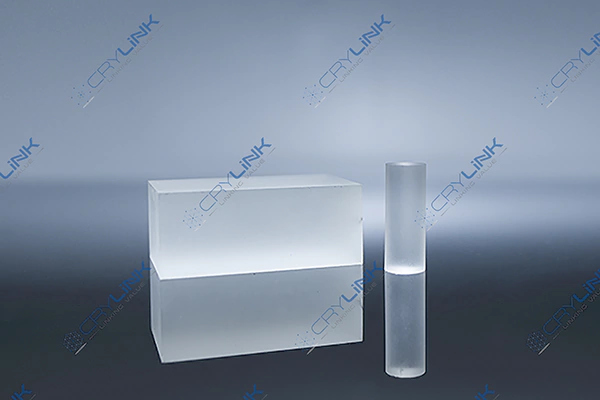
Material Structure
Semiconductors: The Building Blocks of Modern Electronics
Semiconductors, often referred to as the heartbeats of modern electronic devices, boast unique electrical properties. They possess an intermediate level of electrical conductivity, which means their conductivity is neither as high as metals like copper or gold nor as low as insulators such as glass or rubber. Silicon and germanium are the primary constituents of most semiconductors, with silicon being the most widely used due to its abundant availability and excellent semiconductor properties.
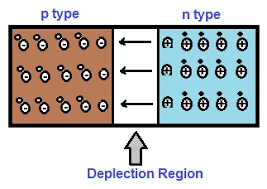
What sets semiconductors apart is their intrinsic property to manage and control the flow of electrical current. This capability stems from the process of introducing specific impurities into their crystalline structure, a process aptly named doping. Doping alters the number of charge carriers within the semiconductor, either adding free electrons (n-type) or creating ‘holes’ where electrons can go (p-type). This ability to manipulate charge carriers within semiconductors has revolutionized the electronics industry, enabling the development of devices that can amplify, switch, and process electronic signals with unparalleled efficiency.
Optical Crystals: The Masters of Light Manipulation
In contrast, optical crystals function in the realm of light. These are unique materials that stand out due to their periodic crystal lattice and exceptional optical characteristics. Their primary function revolves around the manipulation of light, whether it’s transmission, reflection, or refraction. The behavior of light as it interacts with these crystals largely depends on the crystal’s structure and the specific wavelengths of light it encounters.
Common optical crystals, such as quartz, sapphire, and ruby, each have their set of optical properties. For instance, quartz, widely used in timekeeping instruments, possesses piezoelectric properties, meaning it can convert mechanical stress into electric voltage and vice versa. Sapphire, on the other hand, is known for its high durability and is often used in high-end watch covers and specific optical applications. Ruby, renowned for its vibrant red color, is used in lasers due to its ability to produce intense coherent light.
In sum, while both semiconductors and optical crystals are integral to the tech-driven era we live in, they function in diverse capacities. Semiconductors thrive in the electronic sphere, manipulating and directing electrical currents. Meanwhile, optical crystals dominate the optical domain, bending, reflecting, and transmitting light in ways that continue to enrich technological applications worldwide.
Performance
Semiconductors: Versatility in Function
At the heart of most electronic devices, semiconductors demonstrate a remarkable capability to manage and manipulate electric current. Their performance lies in their unique property of conductivity, which sits somewhere between conductors and insulators. This intermediate state allows them a vast realm of functionality.
Semiconductors have the inherent ability to amplify electronic signals. Think of the volume control on audio devices or the signal strength in communication devices; it’s the semiconductor components that manage these functions. Then comes their role as switches. In the world of digital electronics where binary code (0s and 1s) dictates functionality, semiconductors play the pivotal role of turning circuits on and off, effectively serving as gatekeepers of digital information.
Moreover, they can also modulate signals. In devices like radios and televisions, semiconductors help in adjusting the output, ensuring the right frequency is received and relayed. This adaptability and versatility make semiconductors the preferred choice in a plethora of electronic devices, from the most straightforward gadgets like calculators to the most complex supercomputers. It’s this flexibility in function that stands at the core of their ubiquitous presence in our daily tech apparatus, ranging from laptops to smartphones.
Optical Crystals: Precision in Light Handling
In contrast to semiconductors, the domain of optical crystals revolves around light. Their primary performance metric hinges on their proficiency in managing light with precision. To understand their efficiency, consider the way they transmit light. A high-quality optical crystal can transmit beams of light with minimal absorption or scattering, ensuring that the maximum amount of light reaches its intended destination.
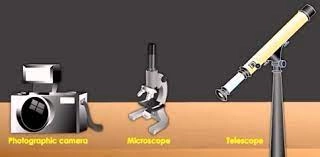
Moreover, the refractive index of these crystals plays a crucial role. It dictates how much the path of light is altered when it enters the crystal. This property is vital in applications like lenses where the bending of light is necessary for magnification or focus. Additionally, optical crystals have unique light scattering properties that can be harnessed in various optical instruments.
When we talk about top-notch optical crystals, we’re essentially discussing materials that allow light to travel through them with maximum efficiency and minimum distortion. This ensures that the resulting output, whether it’s an image or a beam, is of the highest possible quality.
Application Range
Semiconductors: From Gadgets to Grids
Semiconductors are omnipresent in today’s digital age. The sheer breadth of their application is staggering. At the micro-level, they’re integral to integrated circuits that form the core of devices like computers, tablets, and smartphones. They drive the functioning of transistors, which serve as electronic switches.
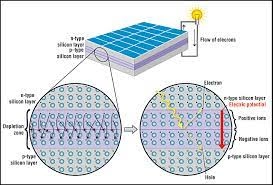
Furthermore, they are central to the operation of diodes that direct current flow. Not to forget, the renewable energy sector greatly benefits from them, especially in solar panels where photovoltaic cells, made from semiconductors, convert sunlight into electricity. Essentially, from household gadgets to large-scale power grids, semiconductors are indispensable.
Optical Crystals: Shaping the Future of Optics
Optical crystals have carved a niche for themselves primarily in the realm of optics. Their ability to manipulate light with precision makes them invaluable in a range of devices. In the realm of healthcare, they’re central to the function of microscopes, aiding in the detailed viewing of microorganisms. The world of astronomy relies on them in telescopes, enabling us to gaze at distant galaxies. In everyday life, cameras, be it in professional DSLRs or in smartphones, employ optical crystals in their lenses.
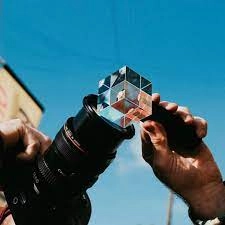
Beyond these, the telecommunications sector greatly benefits from these crystals. With the growing demand for high-speed internet and efficient communication systems, optical crystals play an essential role in transmitting signals over vast distances using fiber-optic cables, ensuring clarity and speed.
In summary, both semiconductors and optical crystals, each in their unique way, continue to shape the technological advancements we witness today, making our lives more efficient and interconnected.
Future Development Direction
Semiconductors: Towards More Efficient Computing
The race for supremacy in the semiconductor industry has always been about efficiency and miniaturization. Each year, technological advancements aim to pack more transistors onto silicon wafers, adhering to Moore’s Law which postulates that the number of transistors on a chip doubles approximately every two years. This relentless pursuit leads to higher processing power and greater energy efficiency. However, as conventional methods reach their physical limits, the industry is now eyeing revolutionary concepts. Quantum computing, for instance, is expected to usher in a new era where computational problems, once deemed unsolvable, become tractable. These quantum bits, or qubits, harness the principles of superposition and entanglement to perform multiple computations simultaneously. With research intensifying in this domain, the future of semiconductors seems set to redefine the boundaries of computing.
Optical Crystals: Expanding Horizons in Telecommunication and Beyond
Optical crystals are paving the way for groundbreaking improvements across various sectors. In telecommunications, as the world becomes increasingly connected, the demand for faster data transfer speeds is soaring. Optical crystals, with their superior light manipulation capabilities, are poised to play a pivotal role in enhancing fiber-optic transmission, ensuring clearer signals with minimal latency. Furthermore, in the field of imaging, these crystals are expected to contribute to the development of more advanced lenses and sensors, offering sharper, higher-resolution images across devices, from microscopes to cameras. Another intriguing frontier is the realm of lasers. As laser technology progresses, the reliance on high-quality optical crystals grows, especially in applications like medical treatments, industrial manufacturing, and scientific research. Given these myriad applications and the continual advancements in material science, optical crystals are destined to remain at the forefront of optical innovations.
Conclusion
While semiconductors and optical crystals share the stage in the technological theater, their roles, attributes, and paths are distinctly different. Semiconductors, with their electric current-controlling abilities, are the linchpins of our electronic age. Simultaneously, optical crystals, with their unparalleled prowess in manipulating light, are indispensable in optics and telecommunication. As we move forward, the innovations and advancements in both fields will undoubtedly continue to reshape our technological landscape.
FAQs
- What are the primary materials used in semiconductors?
- The primary materials used in semiconductors are silicon and germanium.
- How do optical crystals manipulate light?
- Optical crystals can transmit, reflect, or refract light based on their structure and the wavelengths of light passing through them.
- Why is doping important in semiconductors?
- Doping introduces impurities into the semiconductor’s crystalline structure, allowing modifications in its conductivity, leading to the creation of n-type or p-type semiconductors.
- What devices utilize optical crystals?
- Devices such as lasers, cameras, microscopes, telescopes, and fiber-optic cables in telecommunications predominantly use optical crystals.
- What is the future of the semiconductor industry?
- The semiconductor industry is evolving towards producing smaller, more efficient chips with potential advancements like quantum computing.

Frank
Frank graduated from the University of Shanghai for Science and Technology, majoring in optics. As a technical engineer at Crylink Company, he deeply understands crystal materials and laser components.
Related Video(s) with this Article
Related Product(s) with this Article
Related Application(s) with this Article
